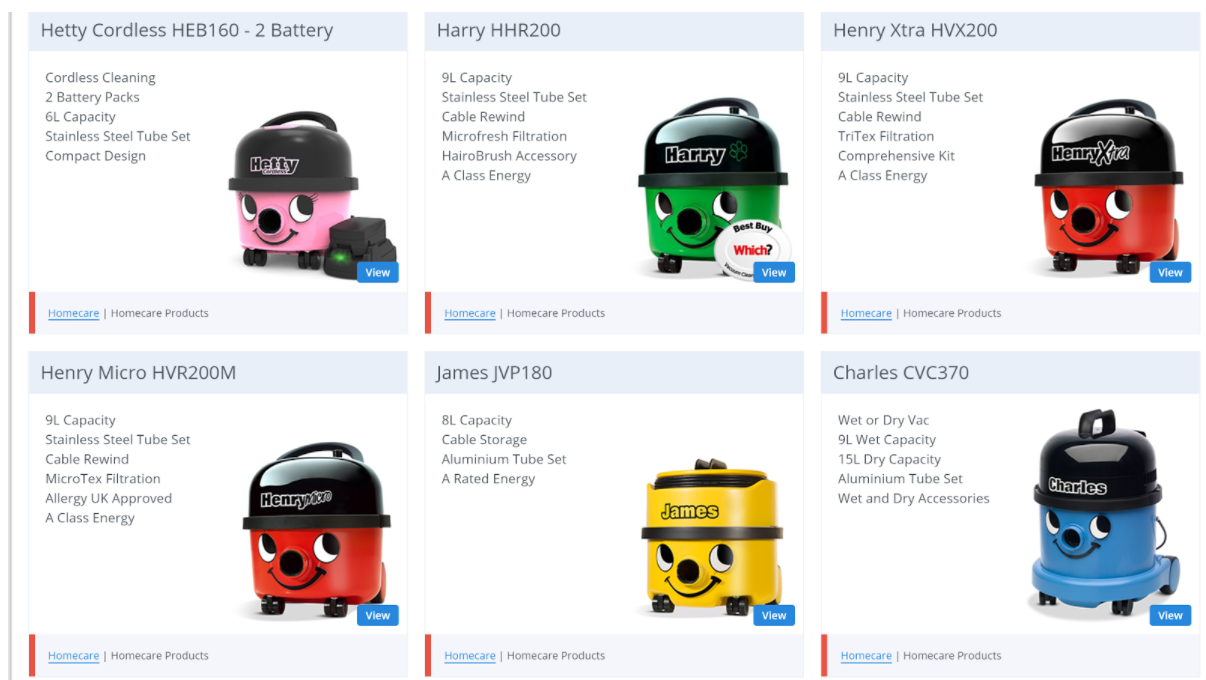- You are here:
- Home »
- Blog »
- Articles »
- 9 Creative Ways to Write About Your Products

9 Creative Ways to Write About Your Products
Don’t let the way you write about your products descend into a mediocre jargon-fest — put some life and soul into your writing by getting creative.
Unleash your inner word artist and write about your products like Shakespeare wrote about his lovers. Dance, play, evoke, tease — use everything within your powers to get customers genuinely excited about what you’re selling.
A blah product description will leave customers unimpressed, and a badly formulated press release will burn bridges with journalists. Here are 9 creative ways you can spice up your product descriptions or blog posts — banish boring boilerplate copy and start writing like you’ve actually got something to say.
Write as if your product is an old friend
It’s easy to become desensitized to your products. It’s tempting to just rattle out the same old benefits + features formula and move on. But what if you looked at your products in the same way that you might look around the dinner table during a meal with old friends? How would you describe them then?
Have you ever tried to give your products a creation story? What about pitting them against some enemies (competitors) or having them race each other? Putting your products into a story framework is a great way to create more engaging content.
Stories about where/how your products are made, and stories about the people who make them, can also be leveraged for content marketing.
Give your products personalities, names, and backstories. By bringing inanimate objects to life, you might play on nostalgic childhood memories, as in the example of “Henry Hoovers” below. This kind of writing gives customers more of a reason and a way to emotionally connect with your products. What’s more, nostalgia makes us happy – and even makes people spend more money.
Source: Numatic.co.uk
British “Henry Hoovers” are legendary; Henry is now joined by Hetty, Harry, James, and Charles. Though the actual copy on the website shows little personality, the vacuums with cute faces and real names have acquired an almost cult status in the UK.
Numatic could certainly be more creative with their descriptions, perhaps adding a playful twist to Henry’s description with additional ‘features’ such as:
- Cheery disposition
- Helps around the house
- Loves watching Sesame Street
Humanizing your products can be as simple as giving them a name, but exploring their personalities will definitely help you improve as an e-commerce content creator.
Try free association to get ideas rolling
So what is the best way to start a free association exercise? Sometimes it’s best to just let the mind do its thing. Let your mind roam and think of words – any words – to describe your product. Ask yourself what it looks, tastes, feels like, or reminds you of, then write down every word that you think of. At this point, there are no ‘wrong’ answers.
By capturing all the different words, feelings, emotions, impressions, smells, and colors that come to mind about your products, you will unearth some surprising, subconscious associations which you can use to help write creatively.
You need to do this kind of brainstorming when you are in the right frame of (creative) mind, perhaps just after a long walk or some exercise. Don’t edit or self-censor — just capture everything that’s tumbling out.
Starting with just a blank sheet of paper can be an incredibly freeing way of dealing with a creative problem. Clear your mind, start writing, and get your thoughts down quickly without critiquing them too much at first. A good technique is to set a time limit, and for that period of time, just keep writing. You can come back and edit what you’ve written later.
When you finish free associating, take a look at what you’ve written. From there, you can pick out words or ideas to use in your formal writing.
Focus on the micro-features
Writing about a bag? When did you last focus on the quality of the stitching on the bottom or how the handle feels when you’re carrying it through a crowded room?
Zooming in on smaller elements of your product can help you come up with some lovely descriptive copy that adds to its overall aura.
People love to know about all the different notes that make up the scent of a perfume, so let your readers get a feel for all the different ‘notes’ that make up your product. Build up a really vivid description of your product by going microscopic and capturing its different features and textures in detail. Observe below how The Fragrance Shop describes one of its perfumes:
“Gucci Bloom is a rich white floral scent that transports you to a colourful and diverse garden verdant with flowers and plants… Jasmine bud extract blends the natural quality of jasmine and captive molecules to impart a fresh green and petal scent on the skin”.
Use word clouds to create new connections
Need to process a lot of product, sales, and keyword data?
Word clouds are old-school, but they are also an awesome visual way of managing a large data set. If you need to squash a lot of information into a short and snappy product description, then leaning on a word cloud is a great way to ensure that you cover all bases, without stifling your creativity.
Instead of a spreadsheet or list, a word cloud allows you to be more creative about how you use terminology. You will definitely make some interesting connections using word clouds! While I wouldn’t suggest including the word cloud itself in your description, what it does do is guide you towards the best words and phrases to use.
Once you have your word cloud, look for the words that are the biggest – they’ll stand out – and use those words as anchors for your writing. You might also take the top five words and work with them to see how you can form connecting ideas to create a strong narrative.
If you’ve never created a word cloud before, it’s really very simple – all you need is a word cloud generator. Input your keyword data into the generator and let the software do the rest.
Do a creative piece for inspiration
A poem, a ballad, a rap song, a drawing: why not focus on a creative piece as part of your writing task? Something that starts off as a bit of fun may end up gracing online blogs or social media!
Using your other creative skills like drawing and playing music will help refresh your brain and loosen up your pen the next time you sit down to write about your products. You can use these creative exercises as a warmup to get your right-brain ready for action.
Don’t write — talk about your product
Because it’s such a solo endeavor, the very act of writing can be alienating. So leave the laptop at home and dictate on the go. Walk around and record yourself talking about your products.
Or, if that doesn’t appeal to you, you could also try meeting up with other writers or friends to talk through your ideas.
Put yourself on the spot with a recorder; talk out loud about your product by describing it or using it in a story. You will come up with more creative ideas, and you’ll probably say things you never thought you would!
Dragon has a great mobile dictation app, but there are other enterprise options out there, too.
Describe it to a beginner
Can you break down a complex bit of B2B SaaS software so that a beginner from outside your industry could understand it? Try. It’s a great creative exercise and a brilliant way to cut down on unnecessary jargon. Stripping things to the bare necessities is always a good idea, as it allows people to figure your product out on a more human level.
Examples of jargon-free copy are (thankfully) on the rise. Instead of saying, “We’ve created an e-commerce content management system on a subscription model,” Shopify says they have an “online store builder that has everything you need.”
Instead of saying, “We sell team and project management software,” Basecamp quips, “All growing businesses run into the same fundamental problems. Hair on fire, buried under email, stuff everywhere. The good news? Basecamp solves them.”
A bit of humor and whimsy can help make your products sound a lot more real and less ‘dry’ to the beginner, even if they are intangible or hard to pin down.
The best thing about this tactic? You will come away with a deeper understanding of your products yourself and will be able to write about them and market them a lot more effectively.
Ask your customers about your product
Speak to the people who actually use your products every day. How do your products make them feel? Do customers have any wacky or unusual ways in which your products have changed their life? Do they have any weird routines or habits that your products are now a part of?
Dig deep into people’s eccentricities and the minutiae of their lives to unearth some rich product stories.
There are lots of ways to get to know your customers better, from leveraging social media and conducting surveys, to sending emails and looking at purchase history. With this information, you can create ‘buyer personas,’ which you can use to guide not only the way you write about products, but also your content strategy, tone of voice, and future product offerings.
Start at the end
Switch things up and start at the end — if the product hasn’t been created yet, describe what it is going to allow people to do or how it might look at the end of the product lifecycle.
Work backwards through the product’s journey and you’ll end up at the beginning.
And sometimes, it’s refreshing to tackle subjects in an unusual order, particularly if you’re writing lots of product descriptions one after the other.
Remember, it’s always important to experiment. As we’ve discussed, your product descriptions are an opportunity to showcase your product’s personality and really get your customers excited about what you have to offer – so don’t waste this valuable opportunity.
As a writer, it’s your job to continually peel back the layers of your products for customers. This is your chance to mix creativity with commercial acumen in order to build a brand that will make people sit up and take notice. I hope this article has given you some useful insights that you can take forward and apply to your own business.
About the Author Victoria Greene
Bad copy makes Victoria sad. There are literally no excuses for sloppy online content! She always encourage content creators to go out there and really live in the world, bringing their experiences and observations back to the team. Great copy isn’t created in a vacuum and doesn’t just ‘happen’.




